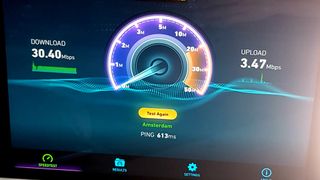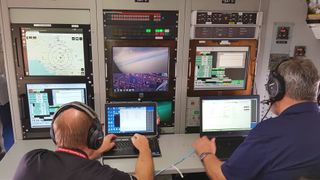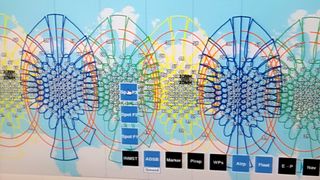Wi-Fi at 35,000 feet! Honeywell demos new in-flight tech for flyers, pilots
In-flight Wi-Fi that doesn't suck!

Tackling in-flight boredom isn’t easy, especially for long-haul flights. And if the in-flight Wi-Fi isn’t good enough for Netflix or FaceTime, filling so many hours in a cramped seat becomes annoying. When it comes to Indian airspace, Wi-Fi service has not been allowed so far due to security concerns. Many international airlines which offer this service for its flyers disable the service as soon as they enter India. The scenario, however, is changing with Ministries of Home Affairs, Telecom and Aviation are working closely to find a solution that will allow the use of Wi-Fi in the air.
The aerospace solution provider Honeywell is on a world tour to showcase the latest in-flight technology called Jetwave. The customized Boeing 757 --fitted with Honeywell's JetWave antennas and hardware, has hit Delhi last week to show-off their ‘connected capabilities’.
It was a never-before experience being a part of the ‘Power of Connected’ tour and video calling from 10,000 feet above the ground on a 30 Mbps connection.

Powered by Inmarsat satellites, JetWave is meant to offer Wi-Fi for passengers and predictive maintenance for pilots. What this mean is that you can stay connected up in the air to keep up with your favourite TV show, watch YouTube, and do more. So the 'out of office with limited access to email' autoresponder could soon be a thing of the past.
‘The connected system also tackles one of the major challenges pilots face,’ says Sasi Kancharla, - Sales Leader, Honeywell Aerospace. The plane's weather radar fitted on top of it can get data from radar systems on other planes to determine turbulence up ahead.

The connectivity is seamless
The antenna fitted at the top of the aircraft receives signals from Inmarsat's Ka-band bandwidth satellites network. It uses two receivers to ensure users stay connected as the plane moves from one satellite beam to another. So one beam lets users stay connected, the second receiver look for a new beam and seamlessly switches to it from the previous one.

With 20 people on the test plane connected to the network, I found the speed juggling between 30 Mbps to 35 Mbps. However, this is likely to fall as more people hop onto the network. The upload speed wasn't great though, it was good enough for me to have the video call without any snag.
Get the best Black Friday deals direct to your inbox, plus news, reviews, and more.
Sign up to be the first to know about unmissable Black Friday deals on top tech, plus get all your favorite TechRadar content.
- Read more about future of in-flight WiFi
Weather radar helps reduce weather delay
IntuVue RDR-4000 is a weather radar that helps pilots see through storms up ahead in the flight path and optimize routing accordingly. "It helps get a clear picture of weather and avoid turbulence," says the Pilot of Honeywell test plane.
Air India is already using Honeywell’s IntuVue 3D tech for its international Boeing 777 fleet for real-time weather updates. According to Honeywell spokesperson, “the system has made a substantial improvement in predicting upcoming weather systems and turbulence.’’
Talking about the cost of the Wi-Fi service, Sasi says, “we can't really give a typical cost structure because this could differ based on the level of customization and what the airline wants to offer to its customers.”
According to reports, the in-flight Wi-Fi may hit Indian airspace soon, but we don’t have a clear timeline yet.
Would you mind paying a little extra to be able to Netflix from 35,000 feet up in the air? If so, how much?
Most Popular

